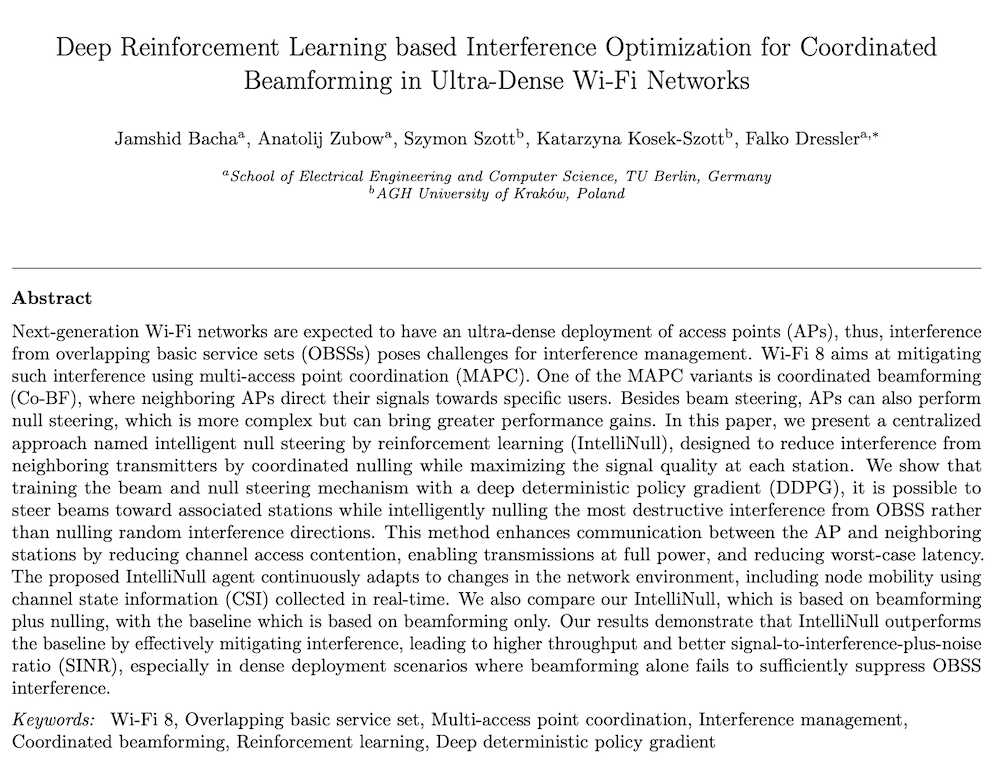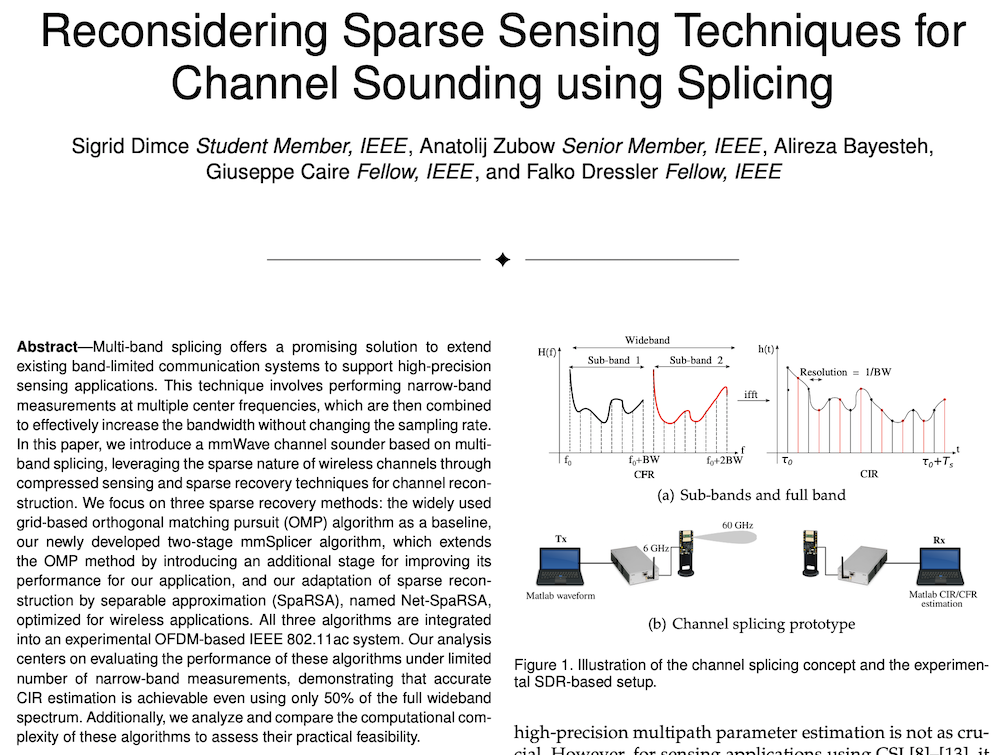Literature Database Entry
ergenc2019isdr
Doğanalp Ergenç and Ertan Onur, "iSDR: SDR-in-the-loop Simulation," Proceedings of 38th IEEE Conference on Computer Communications (INFOCOM 2019), Poster Session, Paris, France, April 2019, pp. 1037–1038.
Abstract
Discrete event network simulators are used to evaluate the performance of a variety of designs in the wireless communication field. They enable researchers to build new network protocols and architectures in a simplified and organized development environment with adherence to the fundamental software engineering principles. However, even though they embody different mathematical models to simulate wireless medium, it is still far from taking an excessive number of channel conditions that directly affect wireless communication into consideration. In this study, we integrate the interface of the software-defined radio (SDR) USRP B210 into the physical layer model of the discrete event simulator OMNeT++ to create an integrated SDR (iSDR) framework. iSDR opens the way to easily develop new network protocols using various OMNeT++ modules and run simulations in wireless medium via the SDR interfaces for realistic performance results. We present working principles of iSDR and discuss significant design issues to support complex simulation scenarios.
Quick access
Original Version ![]() (at publishers web site)
(at publishers web site)
BibTeX ![]()
Contact
Doğanalp Ergenç
Ertan Onur
BibTeX reference
@inproceedings{ergenc2019isdr,
author = {Ergen{\c{c}}, Doğanalp and Onur, Ertan},
doi = {10.1109/infcomw.2019.8845297},
title = {{iSDR: SDR-in-the-loop Simulation}},
pages = {1037--1038},
publisher = {IEEE},
isbn = {978-1-7281-0515-4},
address = {Paris, France},
booktitle = {38th IEEE Conference on Computer Communications (INFOCOM 2019), Poster Session},
month = {4},
year = {2019},
}
Copyright notice
Links to final or draft versions of papers are presented here to ensure timely dissemination of scholarly and technical work. Copyright and all rights therein are retained by authors or by other copyright holders. All persons copying this information are expected to adhere to the terms and constraints invoked by each author's copyright. In most cases, these works may not be reposted or distributed for commercial purposes without the explicit permission of the copyright holder.
The following applies to all papers listed above that have IEEE copyrights: Personal use of this material is permitted. However, permission to reprint/republish this material for advertising or promotional purposes or for creating new collective works for resale or redistribution to servers or lists, or to reuse any copyrighted component of this work in other works must be obtained from the IEEE.
The following applies to all papers listed above that are in submission to IEEE conference/workshop proceedings or journals: This work has been submitted to the IEEE for possible publication. Copyright may be transferred without notice, after which this version may no longer be accessible.
The following applies to all papers listed above that have ACM copyrights: ACM COPYRIGHT NOTICE. Permission to make digital or hard copies of part or all of this work for personal or classroom use is granted without fee provided that copies are not made or distributed for profit or commercial advantage and that copies bear this notice and the full citation on the first page. Copyrights for components of this work owned by others than ACM must be honored. Abstracting with credit is permitted. To copy otherwise, to republish, to post on servers, or to redistribute to lists, requires prior specific permission and/or a fee. Request permissions from Publications Dept., ACM, Inc., fax +1 (212) 869-0481, or permissions@acm.org.
The following applies to all SpringerLink papers listed above that have Springer Science+Business Media copyrights: The original publication is available at www.springerlink.com.
This page was automatically generated using BibDB and bib2web.





